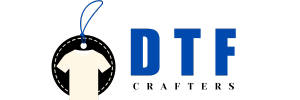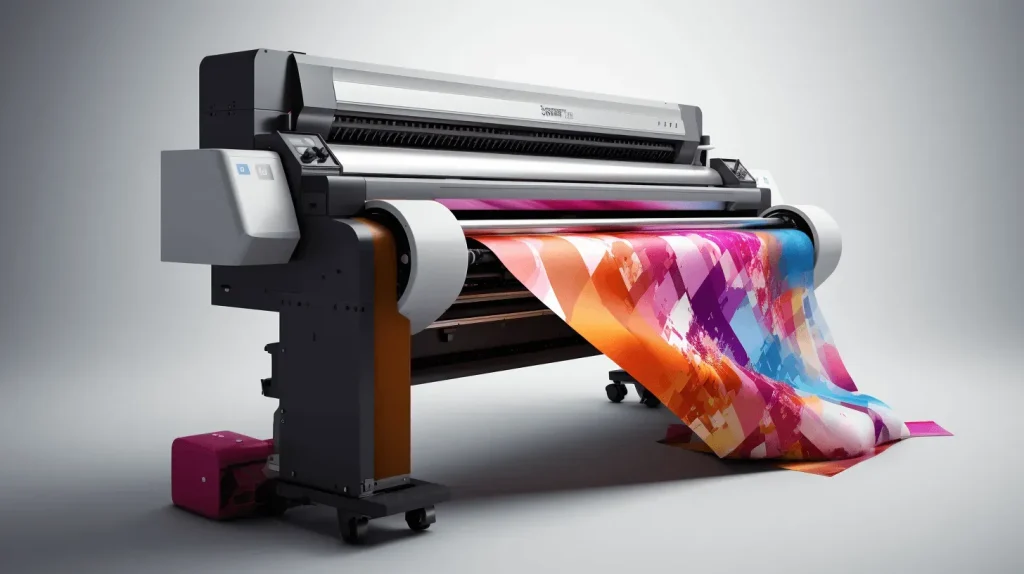DTF printing, or Direct to Film printing, is revolutionizing the world of custom merchandise with its innovative approach to design transfer. As businesses strive to satisfy the evolving preferences of consumers, DTF technology is rapidly becoming the go-to solution for vibrant and intricate prints. This cutting-edge method streamlines the production process, making it more efficient and cost-effective than traditional techniques like screen printing. One of the key advantages of DTF is its versatility, allowing for customization options that cater to even the most niche markets. Moreover, DTF printing aligns with the growing demand for sustainable printing practices, making it a responsible choice for eco-conscious brands.
The emergence of Direct to Film printing marks a significant shift in how brands can approach the creation of custom products. By utilizing advanced techniques that deliver stunning visuals and remarkable durability, this technology is gaining traction in the realm of personalized merchandise. The seamless transfer of designs onto various fabrics not only enhances the aesthetic appeal but also supports a more efficient production pipeline. As the appetite for bespoke merchandise grows, DTF serves as a pivotal player, allowing for swift adaptations to market trends. Additionally, the focus on sustainable printing methods through DTF plays an essential role in meeting contemporary business and consumer expectations.
The Rise of DTF Printing in Custom Merchandise
In recent years, the landscape of custom merchandise has seen a significant evolution, primarily due to the groundbreaking technology of Direct to Film (DTF) printing. DTF printing offers a revolutionary approach that allows businesses to produce vibrant and intricate designs with significant ease. Compared to traditional methods, DTF provides superior quality prints, making it a favored option among brands looking to stand out in a competitive market. As more companies adopt this technology, the demand for custom merchandise is only expected to grow, bridging the gap between high-quality production and consumer expectations.
Moreover, DTF printing eliminates many of the hurdles associated with conventional printing methods, such as the need for extensive screen setup or lengthy production runs. This versatility marks DTF as a game-changer in the industry, helping businesses not only enhance their product offerings but also cater to unique customer preferences. As consumers increasingly seek personalized and custom items, DTF’s ability to efficiently produce bespoke designs positions it as a dominant player in the custom merchandise sector.
Understanding DTF Technology: Process and Benefits
DTF technology is a state-of-the-art printing method that involves transferring designs from a film onto fabric. The process begins with high-quality graphics being printed onto a special transfer film, which is then coated with a specialized adhesive. After curing, the film is placed against the fabric and heat-pressed, resulting in vibrant, durable prints that adhere effectively to various materials. This method stands out due to its adaptability, capable of printing on cotton, polyester, and even blends, thus catering to a wide range of customer needs.
The advantages of DTF printing extend beyond just the printing process itself. One of the most notable benefits is the exceptional quality and vibrancy it delivers. DTF prints boast remarkable color richness and detail that can capture even the most intricate designs. Additionally, recent advancements have improved the durability of DTF prints against washing and fading, ensuring that the products maintain their visual appeal over time. Such benefits are driving more businesses to embrace DTF technology as a standard practice in their operations.
Customization and Flexibility: The DTF Advantage
One of the hallmark features of DTF printing is its remarkable customization and flexibility, which appeals greatly to businesses in the custom merchandise market. Brands can easily produce small batch runs or tailor designs based on specific customer requests, allowing for an unprecedented level of personalization. This adaptability enables businesses to respond quickly to market trends and customer demands, making DTF an ideal choice for companies operating in fast-paced environments.
Furthermore, the ability to create unique designs without the extensive setup costs associated with traditional printing methods gives entrepreneurs a significant edge. With DTF, businesses can experiment with new styles or seasonal designs effortlessly, bolstering their creative expression. As the market continues to evolve, the demand for such personalized merchandise is only set to increase, positioning DTF printing as an essential tool for any brand looking to engage its customers effectively.
Cost Efficiency: How DTF Printing Saves Money
Cost efficiency is a critical consideration for businesses exploring manufacturing options in today’s competitive landscape. DTF printing stands out as a cost-effective solution, especially for smaller production runs that would typically incur higher expenses with traditional screen printing techniques. This affordability allows brands to produce high-quality merchandise without facing prohibitive upfront costs, making it accessible for startups and small businesses to compete effectively in the custom merchandise arena.
Additionally, the streamlined process associated with DTF technology reduces waste and minimizes material costs. With the capability to print on-demand, companies can avoid the excess inventory issues that can plague traditional printing methods. This financial flexibility not only empowers businesses to engage in more creative ventures but also aids in maintaining sustainable practices by reducing overproduction risks. As budget-consciousness becomes increasingly important in business strategies, DTF printing offers a compelling alternative.
Sustainable Printing Practices with DTF
In an era where sustainability is at the forefront of consumer consciousness, DTF printing emerges as a leader in eco-friendly practices. Utilizing water-based inks significantly reduces the environmental impact associated with traditional printing methods, which often rely on harmful solvents. DTF technology not only meets the rising consumer demand for greener options but also aligns businesses with broader sustainability goals, positioning them favorably in an eco-conscious marketplace.
By adopting DTF printing, companies can enhance their brand image and appeal to a customer base that values environmentally responsible practices. This commitment to sustainable printing not only helps to lower the overall carbon footprint but also encourages responsible production cycles. As businesses increasingly invest in solutions that resonate with their values and those of their consumers, DTF printing stands as a model of how modern technology can support sustainability while delivering high-quality products.
Market Trends: The Future of DTF in Custom Merchandise
The current surge in demand for custom merchandise presents a unique opportunity for DTF printing to expand its footprint in the market. As e-commerce continues to rise, especially post-pandemic, businesses are leveraging DTF printing’s speed and versatility to meet various consumer needs with immediacy and precision. This trend reflects a broader shift towards personalized shopping experiences, where DTF’s ability to accommodate small runs and customized items is crucial.
Moreover, the growing inclination towards personalized merchandise is not just a trend, but a defining feature of future commerce. Consumers are increasingly drawn to items that reflect individuality, and DTF printing enables businesses to meet this demand effectively. Hence, marrying DTF technology with market insights allows brands to remain agile and relevant, fostering a forward-thinking approach that anticipates and responds to evolving customer preferences in the ever-competitive landscape of custom merchandise.
Frequently Asked Questions
What is DTF printing and how does it work?
DTF printing, or Direct to Film printing, is a modern technique that involves printing high-quality designs onto a special transfer film, which is then applied to various fabrics. This method allows for vibrant colors and intricate details in custom merchandise, differentiating it from traditional printing methods like screen printing and Direct to Garment (DTG) printing.
What are the advantages of DTF printing over traditional methods?
The advantages of DTF printing include superior quality and vibrancy of prints, cost efficiency, and fast turnaround times. Unlike traditional screen printing, DTF technology minimizes setup costs and is ideal for small to medium production runs. This flexibility enables businesses to produce personalized and custom merchandise quickly, catering to evolving consumer demands.
How does DTF technology contribute to sustainable printing practices?
DTF technology utilizes water-based inks which are generally more eco-friendly compared to traditional solvent-based inks used in other printing methods. By adopting DTF printing, businesses can reduce their environmental impact while fulfilling the consumer demand for sustainable practices within the custom merchandise industry.
Is DTF printing suitable for small batch production?
Yes, DTF printing is particularly well-suited for small batch production. Its ability to accommodate custom orders and intricately designed prints without the high setup costs typical of screen printing makes it an excellent choice for businesses focusing on niche markets or personalized merchandise.
What types of fabrics can be used with DTF printing?
DTF printing is versatile and can be applied to a wide range of fabrics, including cotton, polyester, and blends. This adaptability allows businesses to explore custom merchandise options across various materials and styles, making it a popular choice for apparel and promotional items.
How quickly can businesses expect turnaround times with DTF printing?
Businesses can expect fast turnaround times with DTF printing, often faster than traditional screen printing or DTG methods. This speed allows brands to respond quickly to consumer trends and demands, making it an ideal option for e-commerce platforms that prioritize timely fulfillment of custom merchandise orders.
| Key Features | Description |
|---|---|
| What is DTF? | Direct to Film (DTF) printing is a modern technique where designs are printed on a special film before being transferred onto fabrics. It offers greater efficiency, versatility, and quality compared to traditional methods. |
| Quality and Vibrancy | DTF printing delivers exceptional color reproduction and detailed designs, with advancements making prints more durable and long-lasting. |
| Cost Efficiency | DTF printing is cost-effective, especially for small production runs, reducing setup and equipment costs compared to screen printing. |
| Fast Turnaround | The speed of DTF printing allows brands to quickly produce merchandise, catering to the fast-paced demands of consumers and e-commerce. |
| Customization and Flexibility | DTF enables high degrees of customization, accommodating small batches and unique designs for personalized products. |
| Growing Market Demand | With the rise of e-commerce and consumer demand for custom items, DTF printing is becoming increasingly popular and relevant. |
| Environmental Considerations | Uses water-based inks that are more eco-friendly, aligning with growing sustainability demands from consumers and businesses alike. |
Summary
DTF printing is revolutionizing the custom merchandise landscape by offering high-quality and cost-effective solutions that meet the diverse needs of modern consumers. This innovative printing method combines speed, flexibility, and environmental consciousness, making it an attractive option for businesses looking to enhance their product offerings. As the custom merchandise market continues to expand, DTF printing stands out as a game-changer, enabling brands to deliver vibrant, personalized products while maintaining sustainable practices. With its myriad advantages, DTF printing is quickly becoming the preferred choice for entrepreneurs and established businesses alike, shaping the future of customized apparel.



